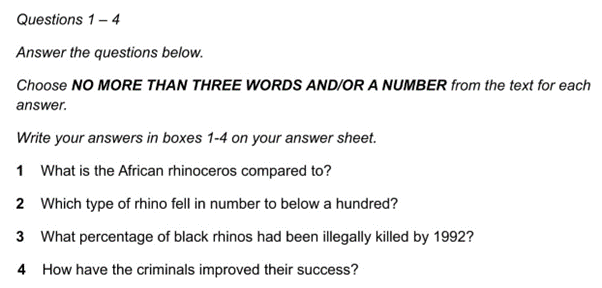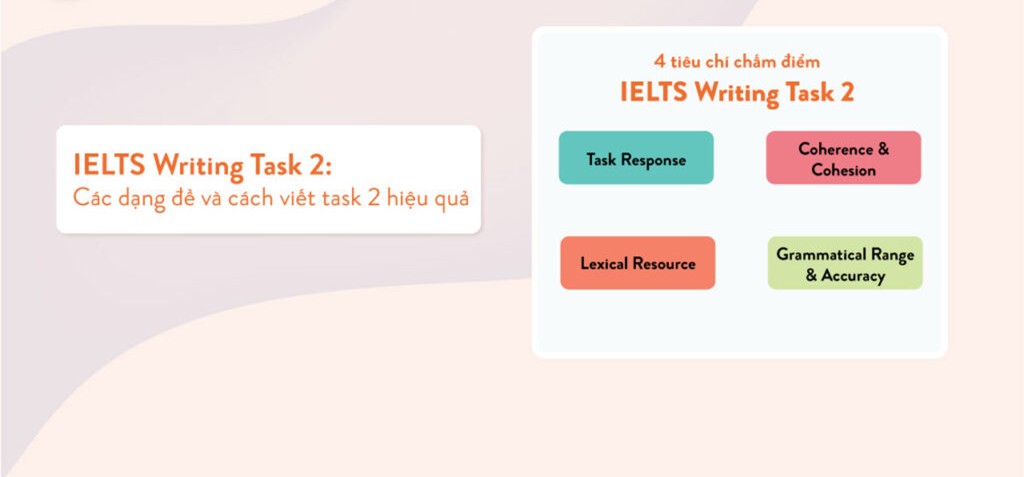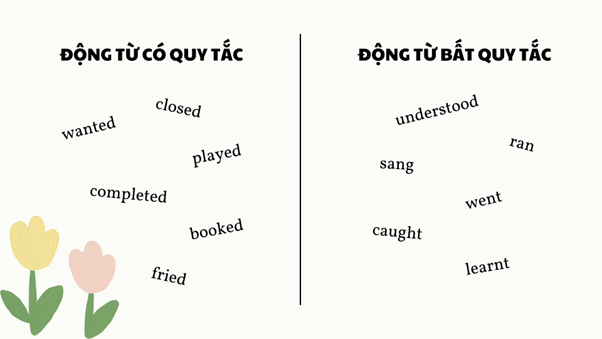Là một dạng bài tương đối phổ biến và quan trọng trong IELTS Reading, Short-Answer questions cần được các thí sinh ôn luyện tốt và có chiến thuật làm bài hiệu quả để đạt điểm số tuyệt đối. Vậy, cụ thể format và các bước làm dạng Short-Answer questions như thế nào?
Giới thiệu về dạng bài Sentence Completion trong IELTS Reading

Dạng bài Short – Answer questions đòi hỏi thí sinh phải trả lời những câu hỏi có liên quan tới nội dung đề cập trong văn bản. Đề bài sẽ ghi rõ về số chữ và số của câu trả lời. Câu trả lời phải bằng các từ có xuất hiện trong bài đọc.
Bởi vậy, thí sinh cần lưu ý một số điều sau khi làm bài:
- Lưu ý 1: Câu trả lời là các từ được lấy trực tiếp từ văn bản.
Đề bài sẽ có yêu cầu điền đáp án “from the passage/from the text”. Điều này có nghĩa là học viên chỉ được sử dụng các từ mà bài đọc đã sử dụng cho câu trả lời của mình.
- Lưu ý 2: Giới hạn từ (word limit)
Đây là một yêu cầu không mấy xa lạ trong các dạng bài có yêu cầu điền đáp án trong IELTS. Cụ thể, đề bài sẽ cho biết bạn được phép điền tối đa bao nhiêu từ vào chỗ trống.
Ví dụ:
ONE WORD ONLY: Chỉ chọn duy nhất 1 từ để điền vào chỗ trống.
NO MORE THAN TWO WORDS: Chỉ được điền không quá 2 từ. Bạn có thể điền 1 hoặc 2 từ nhưng không quá 2.
Bên cạnh đó, những từ có dấu gạch nối sẽ được tính là 1 từ. Điển hình như: time-saving, hard-working, heart-shape, life-changing …
- Lưu ý 3: Câu trả lời tuân theo thứ tự của văn bản.
Các đáp án sẽ xuất hiện lần lượt trong bài đọc theo đúng thứ tự câu hỏi. Nghĩa là, phần thông tin chứa đáp án của câu 1 nằm trước phần thông tin chứa đáp án của câu 2. Do đó, nếu có thể, bạn nên làm bài theo đúng trình tự và đánh dấu vùng thông tin của câu đã làm để dễ khoanh vùng thông tin cho các câu hỏi sau.
- Lưu ý 4: Câu hỏi thường được paraphrase (diễn đạt theo cách khác) so với thông tin trong bài đọc.
Các bước chinh phục dạng bài Short-Answer questions IELTS Reading
Bước 1: Đọc kỹ đề bài
Đầu tiên, thí sinh cần đọc thật kỹ phần hướng dẫn và lưu ý cụm từ được in đậm. Đề bài sẽ cho biết bạn được phép điền tối đa bao nhiêu từ vào chỗ trống.
- ONE WORLD ONLY: Chỉ điền duy nhất 1 từ vào chỗ trống.
- NO MORE THAN THREE WORDS AND/OR A NUMBER: Trong yêu cầu này, a number được tính là 1 từ. Do đó, theo ví dụ như trên, 25 October gồm một từ và số sẽ được tính là 2 từ. Bạn có thể chọn trả lời không quá 3 từ, hoặc điền vào 2 từ và một con số.
- NO MORE THAN THREE WORDS FOR EACH ANSWER: Số lượng từ điền vào phần trả lời không được quá ba từ.
Nếu thấy đề bài xuất hiện cụm từ “from the passage” hoặc “ from the text”, thí sinh chỉ được sử dụng những từ được lấy ra từ bài đọc để điền vào đáp án. Nếu không có cụm từ này, bạn có thể trả lời bằng các từ đồng nghĩa, cụm từ tương đương miễn là ý nghĩa của từ vẫn đúng, nhưng trường hợp ít xảy ra.
Như đã nói ở lưu ý, những từ có dấu gạch nối sẽ được tính là 1 từ.
Bước 2: Đọc hiểu câu hỏi và gạch chân các từ khóa (keywords)
Hãy gạch chân những từ khóa quan trọng trong câu hỏi để giúp việc tìm kiếm thông tin được dễ dàng hơn.
Lưu ý trong quá trình gạch chân từ khóa, bạn xác định ba loại từ khóa như sau:
- Unchangeable keywords: Những từ khóa gần như không bị biến đổi hay paraphrase, điển hình như tên riêng, số liệu, ngày tháng, thuật ngữ khoa học. Những từ khóa này hầu như khó thay thế trong bài đọc, vì vậy bạn cần ưu tiên xác định các từ khóa để tìm kiếm thông tin.
- Changeable keywords: Đây là những từ khóa có thể bị biến đổi trong bài. Các từ có thể bị paraphrase thành những từ đồng nghĩa, biến đổi dạng từ thành động từ, tính từ hoặc cụm danh từ. Bạn cần nắm từ khóa này để tìm kiếm thông tin liên quan.
- Hidden keywords: bao gồm các động từ và tính từ. Loại từ khóa này hầu như sẽ được thay thế bằng cách diễn đạt khác trong bài đọc. Người học sử dụng từ khóa này để định vị thông tin khi bài đọc không có từ khóa khó thay thế hoặc khi không xác định được cách diễn đạt khác của từ khóa dễ thay thế.
Hãy đặc biệt lưu ý các từ khóa khó bị biến đổi để tìm kiếm thông tin nhanh và dễ dàng hơn.
Bước 3: Đọc lướt bài đọc (Skimming)
Ở bước này, các bạn đọc lướt một lượt bài đọc để nắm được ý chính của từng đoạn. Điều này sẽ là tiền đề để các bạn tìm kiếm thông tin chứa đáp án trong bước sau.
Cùng lúc đó, hãy để ý những keywords có xuất hiện và note lại nếu có thể, điều này cũng giúp thí sinh tiết kiệm thời gian hơn cho bước tiếp theo.
Bạn có thể tìm hiểu kỹ hơn về kỹ năng Skimming tại đây.
Bước 4: Định vị thông tin cần tìm trong bài đọc và tìm đáp án
Sau khi đã đọc lướt qua bài đọc, hãy đọc lại câu hỏi một lần nữa để xác định các từ khóa đã gạch chân. Bạn sẽ dễ dàng tìm được thông tin chứa đáp án bởi đã nắm được ý chính của từng đoạn cũng như các keywords xuất hiện ở bước trước đó.
Như đã nói, các câu trả lời sẽ xuất hiện theo thứ tự nên hãy đánh dấu lại vị trí thông tin tìm được của từng câu hỏi để biết được thứ tự cho câu hỏi tiếp theo.
Bước 5: Kiểm tra lại toàn bộ đáp án
Hãy kiểm tra lại toàn bộ đáp án của mình và chắc chắn rằng số từ bạn điền đã đúng giới hạn từ đề bài yêu cầu.
Thực hành
/IELTS Reading Practice Test 43/
The culture of Chimpanzee!
A
The similarities between chimpanzees and humans have been studied for years, but in the past decade, researchers have determined that these resemblances run much deeper than anyone first thought. For instance, the nut-cracking observed in the Taï Forest is far from a simple chimpanzee behavior; rather it is a singular adaptation found only in that particular part of Africa and a trait that biologists consider being an expression of chimpanzee culture. Scientists frequently use the term “culture” to describe elementary animal behaviors – such as the regional dialects of different populations of songbirds – but as it turns out, the rich and varied cultural traditions found among chimpanzees are second in complexity only to human traditions.
B
During the past two years, an unprecedented scientific collaboration, involving every major research group studying chimpanzees, has documented a multitude of distinct cultural patterns extending across Africa, in actions ranging from the animals’ use of tools to their forms of communication and social customs. This emerging picture of chimpanzees not only affects how we think of these amazing creatures but also alters human beings’ conception of our own uniqueness and hints at ancient foundations for extraordinary capacity for culture.
C
Homo sapiens and Pan troglodytes have coexisted for hundreds of millennia and share more than 98 percent of their genetic material, yet only 40 years ago we still knew next to nothing about chimpanzee behavior in the wild. That began to change in the 1960s when Toshisada Nishida of Kyoto University in Japan and Jane Goodall began their studies of wild chimpanzees at two field sites in Tanzania. (Goodall’s research station at Gombe – the first of its kind – is more famous, but Nishida’s site at Mahale is the second oldest chimpanzee research site in the world.)
D
In these initial studies, as the chimpanzees became accustomed to close observation, the remarkable discoveries began. Researchers witnessed a range of unexpected behaviors, including fashioning and using tools, hunting, meat-eating, food sharing and lethal fights between members of neighboring communities. In the years that followed, other primatologists set up camp elsewhere, and, despite all the financial, political and logistical problems that can beset African fieldwork, several of these outposts became truly long-term projects. As a result, we live in an unprecedented time, when an intimate and comprehensive scientific record of chimpanzees’ lives, at last, exists not just for one but for several communities spread across Africa.
E
As early as 1973, Goodall recorded 13 forms of tool use as well as eight social activities that appeared to differ between the Gombe chimpanzees and chimpanzee populations elsewhere. She ventured that some variations had what she termed a cultural origin. But what exactly did Goodall mean by “culture”? According to the Oxford Encyclopedic English Dictionary, culture is defined as “the customs … and achievements of a particular time or people.” The diversity of human cultures extends from technological variations to marriage rituals, from culinary habits to myths and legends. Animals do not have myths and legends, of course. But they do have the capacity to pass on behavioral traits from generation to generation, not through their genes but by learning. For biologists, this is the fundamental criterion for a cultural trait: it must be something that can be learned by observing the established skills of others and thus passed on to future generations.
F
What of the implications for chimpanzees themselves? We must highlight the tragic loss of chimpanzees, whose populations are being decimated just when we are at last coming to appreciate these astonishing animals more completely. Populations have plummeted in the past century and continue to fall as a result of illegal trapping, logging and, most recently, the bushmeat trade. The latter is particularly alarming: logging has driven roadways into the forests that are now used to ship wild-animal meat-including chimpanzee meat to consumers as far afield as Europe. Such destruction threatens not only the animals themselves but also a host of fascinatingly different ape cultures.
G
Perhaps the cultural richness of the ape may yet help in its salvation, however. Some conservation efforts have already altered the attitudes of some local people. A few organizations have begun to show videotapes illustrating the cognitive prowess of chimpanzees. One Zairian viewer was heard to exclaim, “Ah, this ape is so like me, I can no longer eat him.”
H
How an international team of chimpanzee experts conducted the most comprehensive survey of the animals ever attempted. Scientists have been investigating chimpanzee culture for several decades, but too often their studies contained a crucial flaw. Most attempts to document cultural diversity among chimpanzees have relied solely on officially published accounts of the behaviors recorded at each research site. But this approach probably overlooks a good deal of cultural variation for three reasons.
I
First, scientists typically don’t publish an extensive list of all the activities they do not see at a particular location. Yet this is exactly what we need to know-which behaviors were and were not observed at each site. Second, many reports describe chimpanzee behaviors without saying how common they are; without this information, we can’t determine whether a particular action was a once-in-a-lifetime aberration or a routine event that should be considered part of the animals’ culture. Finally, researchers’ descriptions of potentially significant chimpanzee behaviors frequently lack sufficient detail, making it difficult for scientists working at other spots to record the presence or absence of the activities.
J
To remedy these problems, the two of us decided to take a new approach. We asked field researchers at each site for a list of all the behaviors they suspected were local traditions. With this information in hand, we pulled together a comprehensive list of 65 candidates for cultural behaviors.
K
Then we distributed our list to the team leaders at each site. In consultation with their colleagues, they classified each behavior in terms of its occurrence or absence in the chimpanzee community studied. The key categories were customary behavior (occurs in most or all of the able-bodied members of at least one age or sex class, such as all adult males), habitual (less common than customary but occurs repeatedly in several individuals), present (seen at the site but not habitual), absent (never seen), and unknown
Questions 11-14
Answer the questions below.
Choose NO MORE THAN THREE WORDS AND/OR A NUMBER from the passage for each answer.
11 When did the unexpected discoveries of chimpanzee behavior start?
12 Which country is the researching site of Toshisada Nishida and Jane Goodall?
13 What did the chimpanzee have to get used to in the initial study?
14 What term can depict it than Jane Goodall found the chimpanzee used the tool in 1973?
| LƯU Ý: CÁC BẠN ĐƯỢC PHÉP ĐIỀN NHIỀU NHẤT 3 TỪ VỚI/HOẶC 1 SỐ | |
| 11. When did the unexpected discoveries of chimpanzee behavior start?
→ ĐÁP ÁN: in the 1960s |
Paragraph C.
… yet only 40 years ago we still knew next to nothing about chimpanzee behavior in the wild. That began to change in the 1960s when Toshisada Nishida of Kyoto University in Japan and Jane Goodall began their studies of wild chimpanzees at two field sites in Tanzania. → Chúng ta chưa biết gì về hành vi của “chimpanzee” trong hoang dã cho đến những năm 1960s |
| 12 Which country is the researching site of Toshisada Nishida and Jane Goodall?
→ ĐÁP ÁN: Tanzania |
Paragraph C.
… when Toshisada Nishida of Kyoto University in Japan and Jane Goodall began their studies of wild chimpanzees at two field sites in Tanzania. |
| 13 What did the chimpanzee have to get used to in the initial study?
→ ĐÁP ÁN: close observations |
Paragraph D.
In these initial studies, as the chimpanzees became accustomed to close observation, the remarkable discoveries began. |
| 14 What term can depict it than Jane Goodall found the chimpanzee used the tool in 1973?
→ ĐÁP ÁN: a cultural origin |
Paragraph E.
As early as 1973, Goodall recorded 13 forms of tool use as well as eight social activities that appeared to differ between the Gombe chimpanzees and chimpanzee populations elsewhere. She ventured that some variations had what she termed a cultural origin. |
Lời kết
Như vậy, ENVIS đã giúp các bạn hiểu hơn về cách xử lý khi gặp dạng bài Sentence Completion trong IELTS Reading cũng như thực hành dạng bài này. Ngoài ra các bạn cũng có thể tham khảo chiến thuật làm các dạng bài IELTS khác trên websites của ENVIS. Chúc các bạn học tập tốt!













